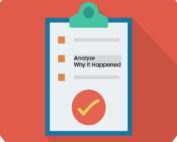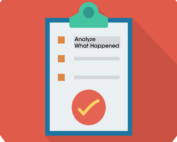What is Learnership?
Learnership combines the words and meanings of the words “learner” and “ownership.” Together, they embody the elevation of learning to learner ownership. Someone who has true learnership is one who self-directs, self-evaluates, self-reflects, and self-controls their own learning. We are posting new articles every week so make it your routine to check-in frequently. Or, subscribe to The Learnership Review and receive monthly emails so you never miss a thing.
Step 2 in a Reflective Data Analysis Protocol: Analyze Why It Happened
In this article you will learn…
- The most effective data protocol is one that has a built-in process to analyze why students did or did not learn what they needed to because it will help you when it comes to reteaching to the specific needs of your students.
- A reflective data analysis protocol includes 3 steps: Identify what happened, reflect on why it happened, identify what happens next.
- You must think about why your students demonstrated their learning the way that they did by looking at the impact of two areas—the format of the assessment and the previous decisions of the teaching and learning experience.
Step 1 in a Reflective Data Analysis Protocol: Analyze What Happened
In this article you will learn…
- The most effective data protocol is one that has a built-in process to analyze why students did or did not learn what they needed to because it will help you when it comes to reteaching to the specific needs of your students.
- A reflective data analysis protocol includes 3 steps: Identify what happened, reflect on why it happened, identify what happens next.
- Before reflecting on what worked and what didn’t, you need to understand what students are telling you in the data by identifying what the purpose of the assessment was and by identifying what were the successes and challenges shown by the data.
How to Close the Learning Gap with a Reflective Data Analysis Protocol
In this article you will learn…
- It is crucial that when teachers look at students’ achievement data, they have time to reflect on what worked, what didn’t, and why.
- In order to ensure learning loss recovery, teachers need a data analysis protocol that has built-in time to reflect so that they can discover why students did or did not learn what they needed to.
- A reflective data analysis protocol includes 3 steps: Identify what happened, reflect on why it happened, identify what happens next.
Why Learning Loss Recovery Is More than Reteaching
In this article, you will learn...
- The benefits of proactive planning for any learning environment.
- The phases of the learning process.
- How to leverage the phases of the learning process when planning and teaching to empower students in their learning.
Don’t Expect Learning Loss Recovery without an Aligned Plan
In this article you will learn…
- A successful learning loss recovery plan must have the curriculum, instruction, and assessment in sync, aligned, and coherent.
- 5 steps for building an aligned curriculum, instruction, and assessment system.
- How to build learning assessments that are clear in their purpose and always focused on student learning.
Reflecting on the Reasons for the Learning Loss of 2020–21
In this article you will learn…
- Reteaching cannot be effective and efficient if the teacher does not clearly understand what worked (and didn’t) during classroom instruction.
- There should be more to data analysis than just identifying what kids didn’t learn and then reteach them.
- To identify WHAT students have learned (or not) and WHY they have learned (or not), in order to determine HOW to reteach them effectively.
What are people saying about Elevated Achievement Group?
Relevant and valuable information that we can put into practice.
Can you imagine building an environment full of motivated, engaged, and eager students who own their learning?
We can.









